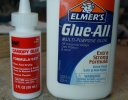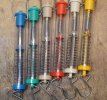blakeh1
Well-Known Member
- Joined
- Oct 26, 2011
- Messages
- 737
How/what glue do you use to attach canopies
I have been using the Testor styrene cement or CA previously, but neither is a great solution
CA can sometimes fog it up, and the testors stuff can sometimes ruin the paint, or yellow, or even fog as well
I have seen some dedicated clear canopy glues, but was wondering what others have typically been using
I have been using the Testor styrene cement or CA previously, but neither is a great solution
CA can sometimes fog it up, and the testors stuff can sometimes ruin the paint, or yellow, or even fog as well
I have seen some dedicated clear canopy glues, but was wondering what others have typically been using



